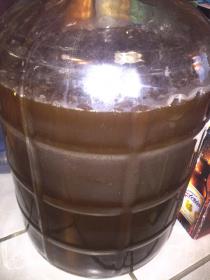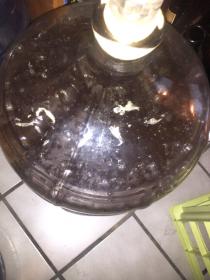So, my first attempt at reusing yeast resulted in a really weird film at the top of the beer during fermentation. My guess is that this may result in some sour beer, so I plan on tasting when I move to my bottling bucket, but I wanted some feedback from you guys to see if I should bother trying to salvage it, and what the dangers might be.
Additionally, any suggestions on how to avoid this gunk when I siphon to my bottling bucket?
On a side note, anybody have any idea on what this stuff is or where it came from? I'm a little concerned about it but I've heard of worse things happening and the beer still being good/ drinkable.



Additionally, any suggestions on how to avoid this gunk when I siphon to my bottling bucket?
On a side note, anybody have any idea on what this stuff is or where it came from? I'm a little concerned about it but I've heard of worse things happening and the beer still being good/ drinkable.





